This fermented cucumbers recipe uses the simple, old-fashioned way to achieve crunchy, tangy pickles packed with natural probiotics. Here you’ll find out how to ferment dill pickles naturally with minial ingredients, by skipping the vinegar and letting nature do its magic. Whether you decide to ferment whole cucumbers or sliced cucumbers – that crisp, tangy bite will be there for sure!
With this easy-to-follow fermented pickles recipe, you’ll get the taste of authentic naturally lacto-fermented pickles with gut-healthy benefits that boosts immunity – right from your kitchen.

After exploring this fermented cucumber guide, don’t miss out on my other delicious ferments: the vibrant fermented red cabbage recipe, the refreshing fermented shaved carrot salad, and the earthy fusion of fermented beet and cabbage delight, fermented watermelon, fermented tomatoes, cauliflower and fermented fish.
Let’s get into cucumber fermenting details and explore the difference between pickled vs fermented cucumbers.
Pickled vs Fermented Cucumbers
Fermented cucumbers, or as they are traditionally known, dill pickles, offer an array of health benefits.
Pickled cucumbers are made by immersing cucumbers in a solution of vinegar, water, and salt, often with spices and flavorings added, and are known for their tangy, sour taste. In contrast, fermented cucumbers, are submerged in a saltwater brine and rely on natural lacto-fermentation to develop their flavor, resulting in cucumbers that are sour with complex flavors and probiotic benefits.
Where You Can Use Fermented Cucumbers
Lacto-fermented pickles are versatile! Add them to sandwiches, chop into salads like this Olivier potato salad or this potato and egg salad, or serve as a tangy side with grilled meats, with chicken fritters, chicken roll ups or meatballs. You can also blend them into dressings or pair with cheeses on a charcuterie board.
You can also drink shots of the brine as probiotic supplement. Or use it in a Martini drink.
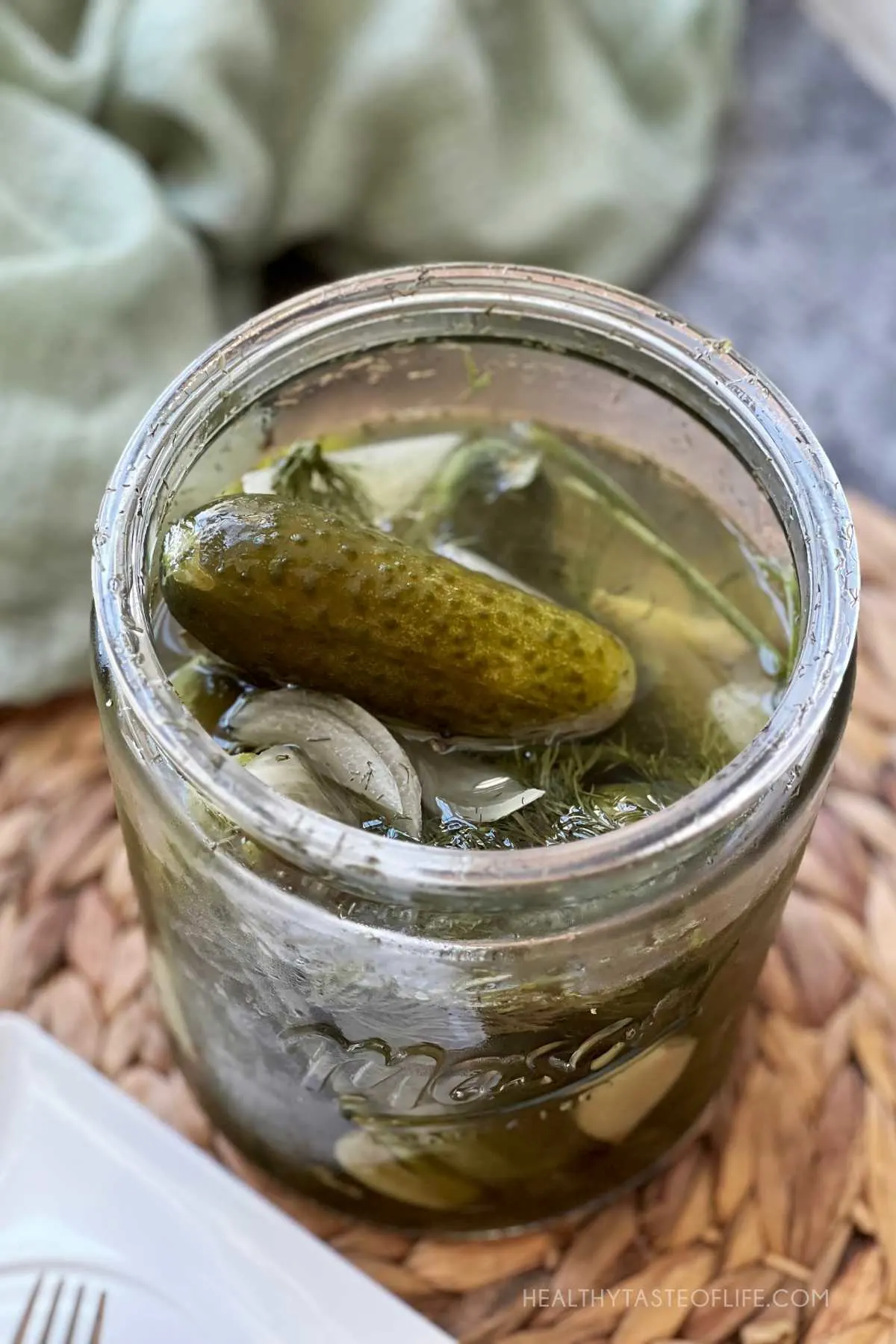
Heads up: some links are affiliated & I may receive a small commission from qualifying sales. For more info see my disclaimer policy.
Ingredients Needed and Their Purpose
- Cucumbers: Make sure they are roughly the same size, the smaller the better. Either ferment whole cucumbers or cucumber slices. Slicing the cucumbers will speed up the fermentation process and ferment more uniformly because the brine can access more of the cucumber. But on the other hand, thicker slices or whole cucumbers tend to retain their crunchiness better over time. Thin slices might become softer faster due to the increased exposure to the brine.
- Dill: Adds the signature dill pickle flavor. Use fresh dill, dry dill weed or both.
- Garlic: Introduces a slight pungency and depth of flavor.
- Spices: Dill seeds, mustard seeds, whole peppercorns and coriander seeds. These spices can be used individually or in combination, depending on personal preferences and the specific flavor profile you’re aiming for in your pickles.
- Tannic Ingredient (optional): Tannins work to keep the firm (crisp) texture of the cucumber throughout the fermentation process. Grape leaves, oak leaves, horseradish leaves, bay leaves and cherry leaves are great. If you prefer crunchy, firm fermented cucumbers, it’s worth considering the addition of one of these tannin sources to your fermenting jar.
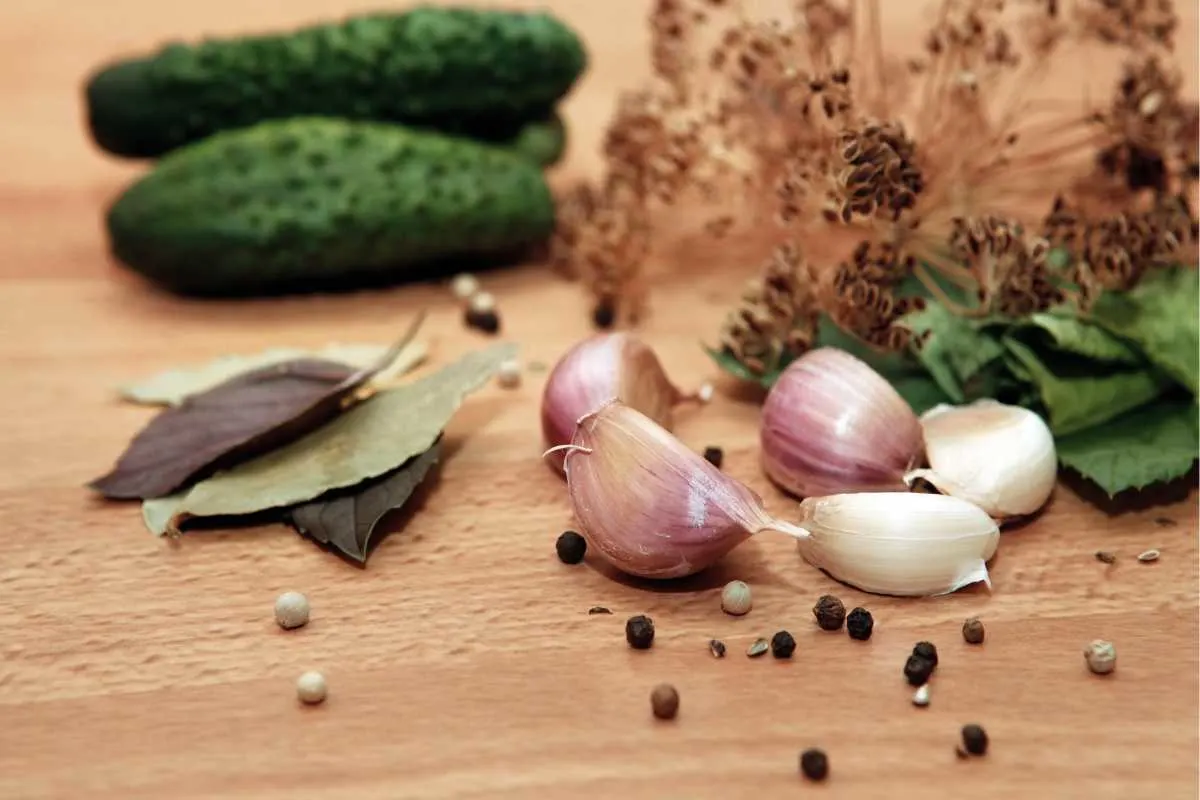
- Salt: Essential in cucumber fermentation, salt pickles by drawing out moisture and creating a brine, preventing harmful bacteria from developing. Gray Celtic salt is often hailed as the best choice for fermentation due to its rich mineral content and absence of additives; however, other unrefined salts, like natural sea salt, is also excellent for supporting the fermentation process effectively.
- Water: Used to create the brine in which the cucumbers ferment.
Step by Step Recipe Instructions
- Preparation: Choose fresh, firm cucumbers. Rinse them well to remove any dirt.
- Salt Brine: Mix salt with water until dissolved. This brine is essential for fermenting cucumbers the right way.
- The salt-to-water ratio in a brine affects taste and fermentation speed. A 2-3% brine, made from 2-3 grams of salt per 100 milliliters of water, is commonly used for fermenting vegetables and offers a balance of flavor and preservation (you can drink it). A higher percentage, like 5%, yields a saltier brine that can slow down fermentation and enhance preservation but might be too salty for some tastes. Conversely, a lower percentage, such as 1%, speeds up fermentation but provides less preservation and may risk spoilage.
- Jar Preparation: Place dill and garlic at the bottom of a clean glass jar along with chosen spices. For fermenting pickles, select a jar that’s large enough to hold your cucumbers comfortably. Ensure there’s 1-2 inches of headspace at the top to allow for brine expansion and gas release. Tight-fitting lids are crucial to prevent contaminants but ensure gas can escape or “burp” the jar occasionally. I like these wide medium size 67 oz glass jars with airtight design.
- Pack the Cucumbers: Place your clean cucumbers into the jar. You can either use cucumber slices or go for whole cucumbers.
- Add the Brine: Pour the salt brine over the cucumbers, ensuring they are fully submerged.
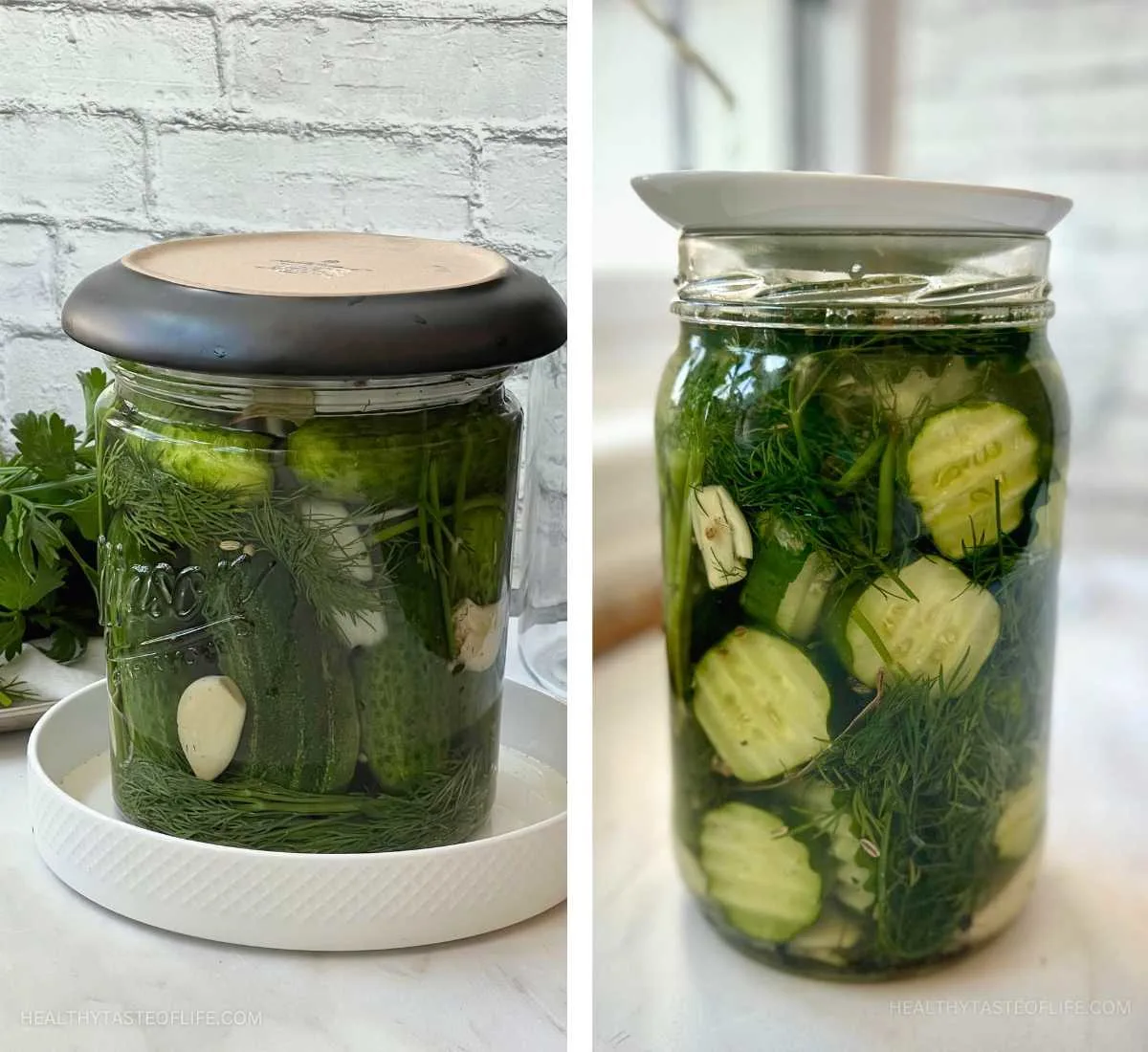
- Seal and Store: Cover the jar lightly with a lid, allowing it to breathe. Let the mixture sit in a dark, cool place for 5-7 days. Check daily. The magic of how to ferment cucumbers will unfold during this period.
- Check and Refrigerate: Once you’ve achieved the desired fermentation level, refrigerate your lacto-fermented pickles to halt the process.
Tips and Tricks
- Always ensure your hands, tools, and jars are clean to avoid introducing harmful bacteria.
- To keep the cucumbers submerged in brine to prevent exposure to air and avoid spoilage:
- Place a large grape leaf on top of the cucumbers pushing it down to act as a barrier.
- Fill a smaller, clean jar with water, seal it, and place it on top inside the fermenting jar to weigh the cucumbers down.
- Or fill a Ziploc bag with water and place it on top of the cucumbers to act as a weight.
- If you see any mold or a bad smell, it’s a sign something went wrong. Discard and start anew.
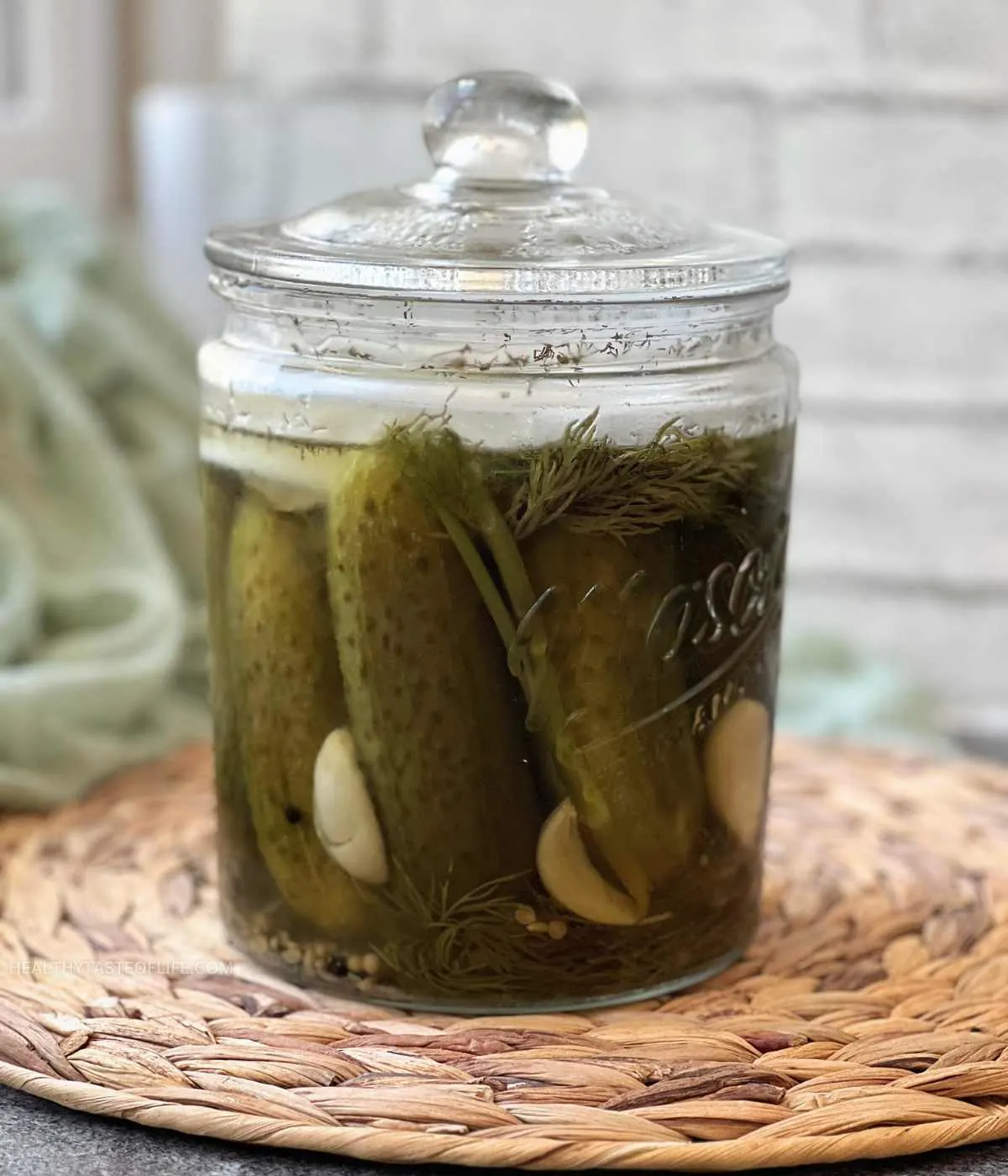
Ingredient Variations
While this recipe focuses on fermented dill pickles, you can also introduce:
- Additional Spices: Fennel Seeds (with a sweet, anise-like flavor, fennel seeds introduce a fragrant note reminiscent of licorice, adding a unique layer of complexity to pickles, or red pepper flakes for a kick or allspice berries (a warm, slightly sweet flavor with hints of clove, cinnamon, and nutmeg).
- Herbs: Fresh tarragon or basil for a different aromatic profile.
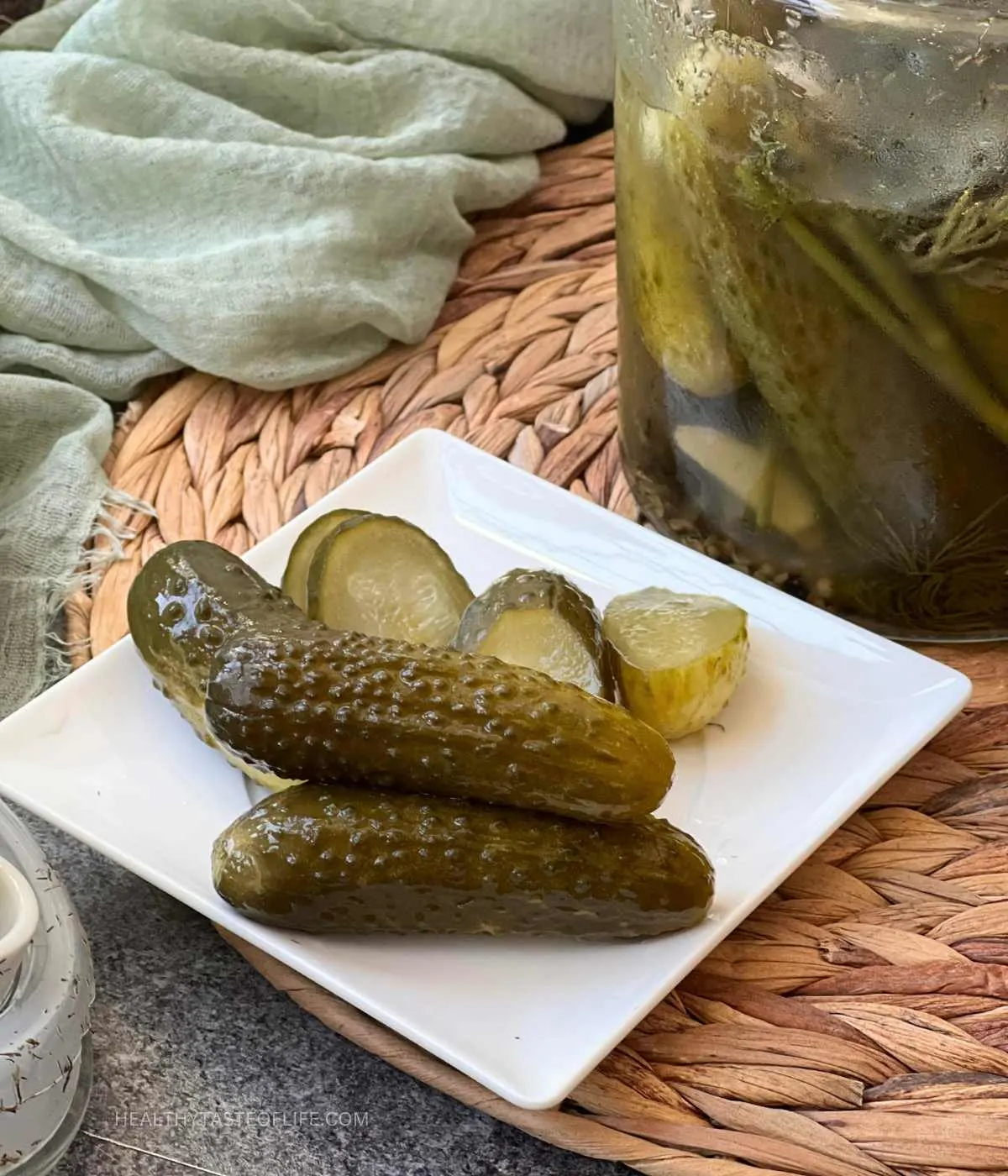
FAQs For Naturally Fermented Cucumbers Without Vinegar
Pickled cucumbers primarily use vinegar (an acidic medium) for preservation, whereas fermented cucumbers rely on natural bacterial action to ferment. This natural fermentation process imparts a distinct, tangy flavor without the use of vinegar, and often introduces beneficial probiotics to the mix.
When stored in the refrigerator, lacto-fermented pickles can last for several months. Always ensure that they remain submerged in the brine and check for any off odors or mold before consuming. I find it best up to 3 months, after that they tend to get softer.
Soft pickles can result from over fermentation or using overripe cucumbers. Ensure you use fresh, firm cucumbers for best results.
It’s recommended to use pickling salt or sea salt as they are free from anti-caking agents and iodine. These additives, often found in table salt, can interfere with the fermentation process and may produce off-flavors.
Yes, a cloudy brine is a natural part of the fermentation process. It indicates the presence of lactic acid bacteria, which are beneficial for gut health. However, if the brine becomes too murky or develops an off smell, it’s best to discard the batch.
While there are special fermentation weights and lids available to make the process more streamlined, they are not strictly necessary. A clean jar and ensuring that your cucumbers remain submerged in the brine are the basics, just use the suggestions listed above. However, if you find yourself fermenting often, investing in fermentation tools might be beneficial.
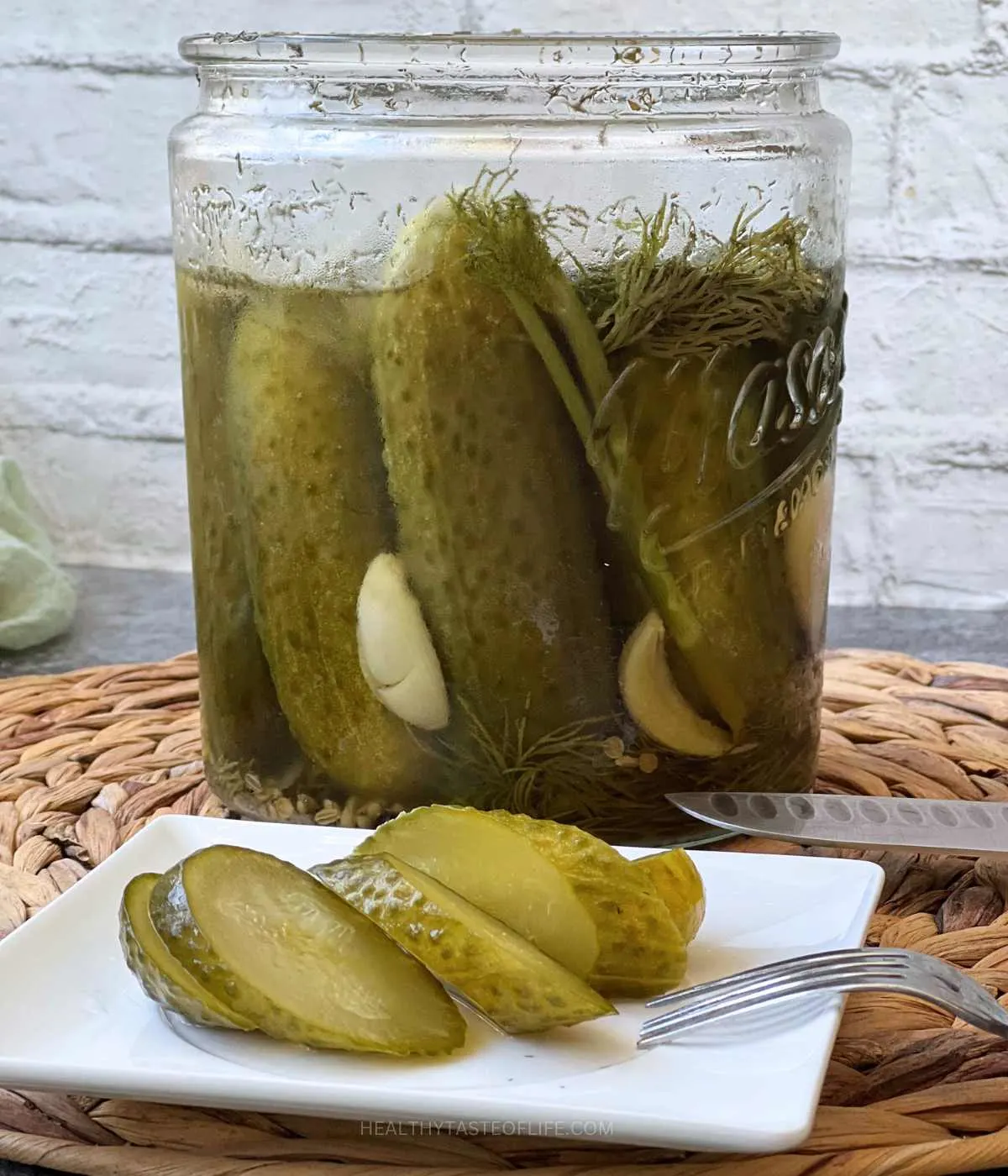
Remember, fermenting is both a science and an art. Trust the process, but also trust your senses. If something looks or smells off, it’s best to start fresh. Happy fermenting!
Lacto-fermenting cucumbers (vinegar-free dill pickles) is not only a culinary adventure but a way to better gut health. The tang, crunch, and satisfaction of enjoying your homemade lacto-fermented pickles are unparalleled. Your taste buds and gut will thank you!
More Fermented Recipes
Printable Recipe
Fermented Cucumbers (Dill Pickles) No Vinegar
Ingredients
- 2 to 2.5 lb pickling cucumbers - ~ 10 to 12 cucumbers (5-6 inch size)
- 8 garlic cloves - lightly smashed
- 2-3 sprigs fresh dill - or 1.5 tsp dry dill weed
Brine
- 5 cups filtered water - ~ 1.2 liters
- 36 g celtic sea salt - ~ 2.1 tablespoons
Spices
- 1 tsp black peppercorns
- 1 tsp whole mustard seeds
- 1 tsp whole coriander seeds
- 2-3 leaves grape, oak, cherry or bay leaves - for tannins
Optional
- ½ onion - sliced
- other favorite spices - celery seeds or jalapeños
Instructions
Preparation:
- Choose fresh, firm cucumbers. Rinse them well to remove any dirt.
- Also make sure your jar was thoroughly washed and steamed steamed with boiling water.
Salt Brine:
- Mix salt with water until dissolved. This brine is essential for fermenting cucumbers the right way.The salt-to-water ratio in a brine affects taste and fermentation speed. A 2-3% brine, made from 2-3 grams of salt per 100 milliliters of water, is commonly used for fermenting vegetables and offers a balance of flavor and preservation (you can drink it). A higher percentage, like 5%, yields a saltier brine that can slow down fermentation and enhance preservation but might be too salty for some tastes.
- In this recipe I'm using a brine concentration of 3%. Feel free to add a little bit more, if you pefer salty food.
Jar Preparation:
- Place dill and garlic at the bottom of a clean glass jar along with chosen spices. Or spread them around the cucumbers. For fermenting pickles, select a jar that’s large enough to hold your cucumbers comfortably, or split into 2 jars.
- Ensure there’s 1-2 inches of headspace at the top to allow for brine expansion and gas release. Lids are crucial to prevent contaminants but ensure gas can escape or “burp” the jar occasionally. I like these wide medium size 67 oz glass jars with airtight design.
Pack the Cucumbers:
- Place your clean cucumbers into the jar. You can either use cucumber slices or go for whole cucumbers.
Add the Brine:
- Pour the salt brine over the cucumbers, ensuring they are fully submerged.
Seal and Store:
- Cover the jar lightly with a lid, allowing it to breathe.
- To keep the cucumbers submerged in brine to prevent exposure to air and avoid spoilage I like to fill a smaller, clean jar with water, seal it, and place it on top inside the fermenting jar to weigh the cucumbers down.
- Let the mixture sit in a dark, cool place for 5-7 days. Usually sliced cucumbers will be ready in about 3-4 days and whole cucumbers a little longer – 5 to 7 days.
Check and Refrigerate:
- Once you’ve achieved the desired fermentation level, refrigerate your lacto-fermented pickles to halt the process.
Nutrition
The information shown is an estimate provided by an online nutrition calculator.
©HealthyTasteOfLife. Content and photographs are copyright protected and need prior permission to use. Copying and/or pasting full recipes to other websites and any social media is strictly prohibited. Sharing and using the link of this recipe is both encouraged and appreciated!
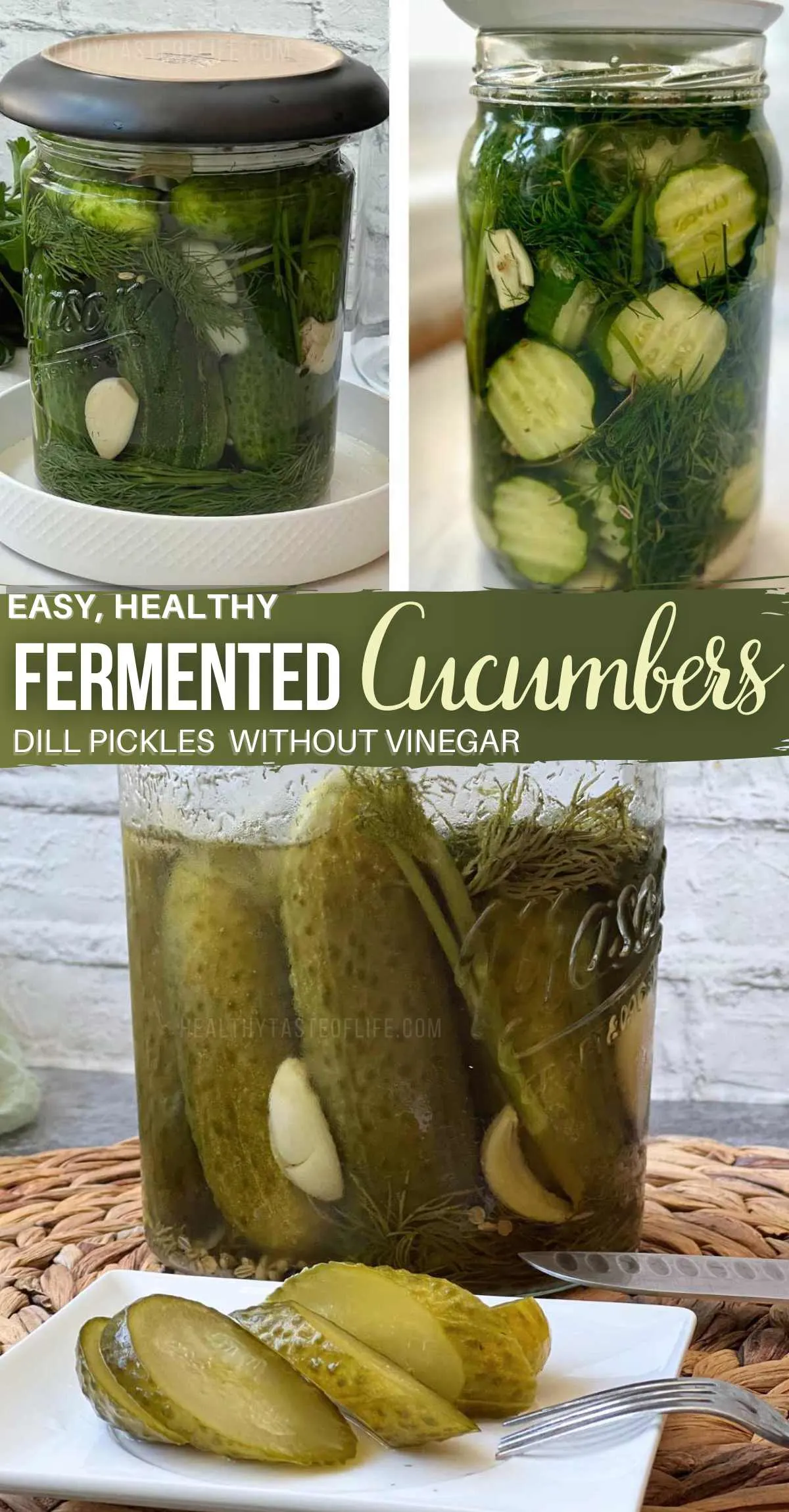


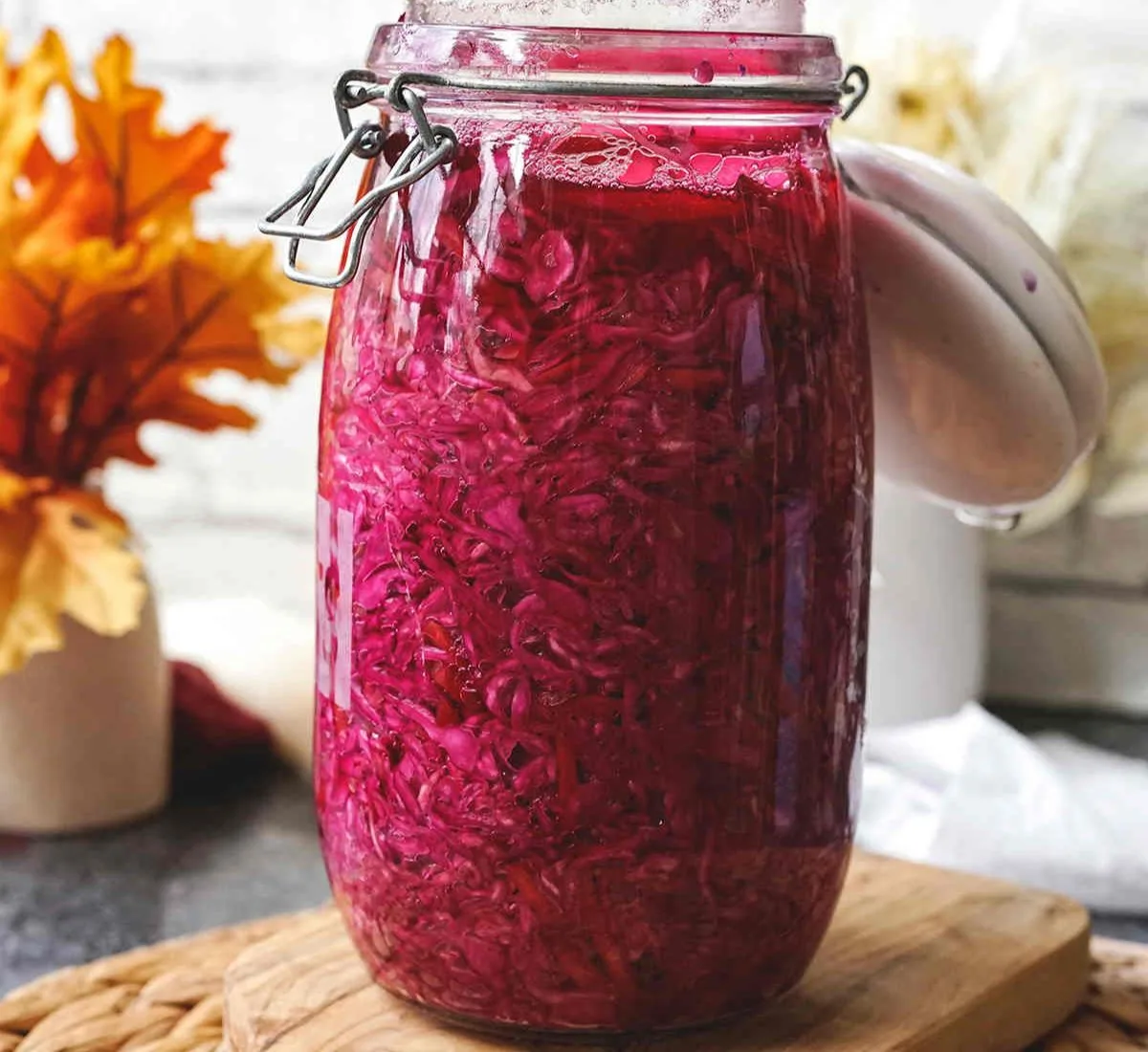
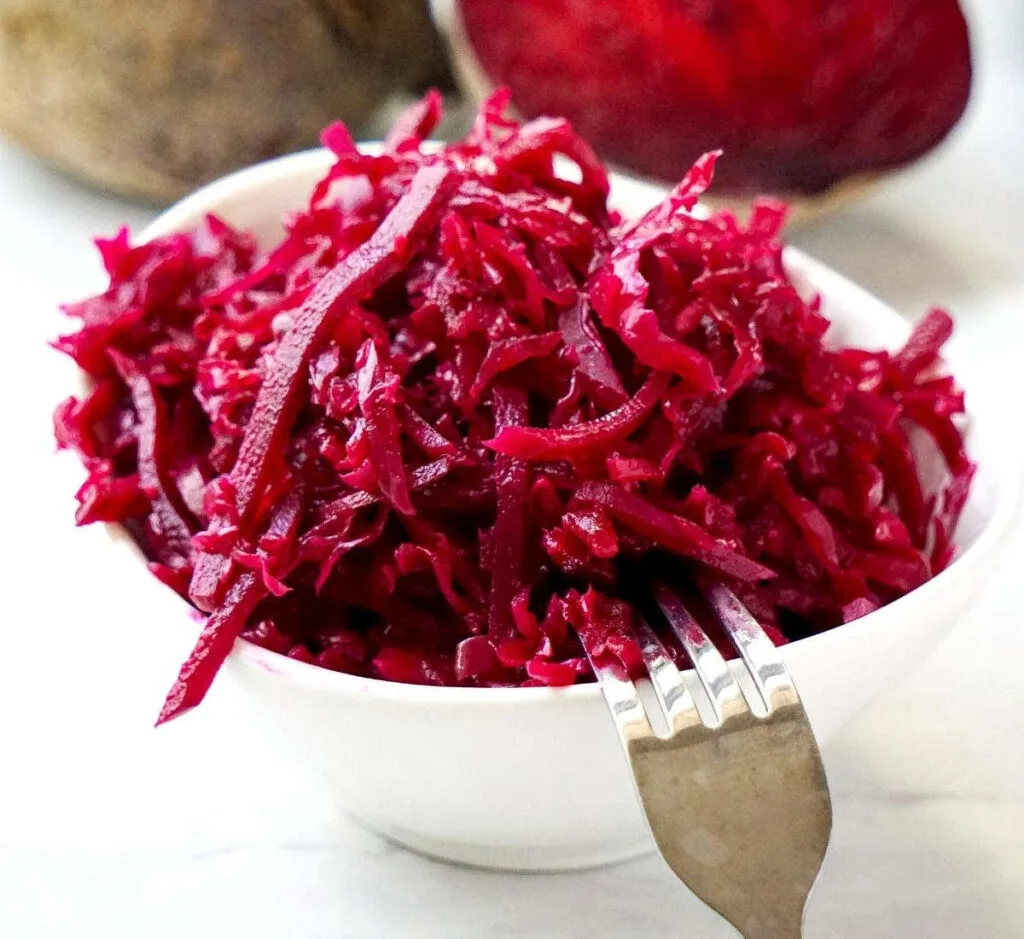
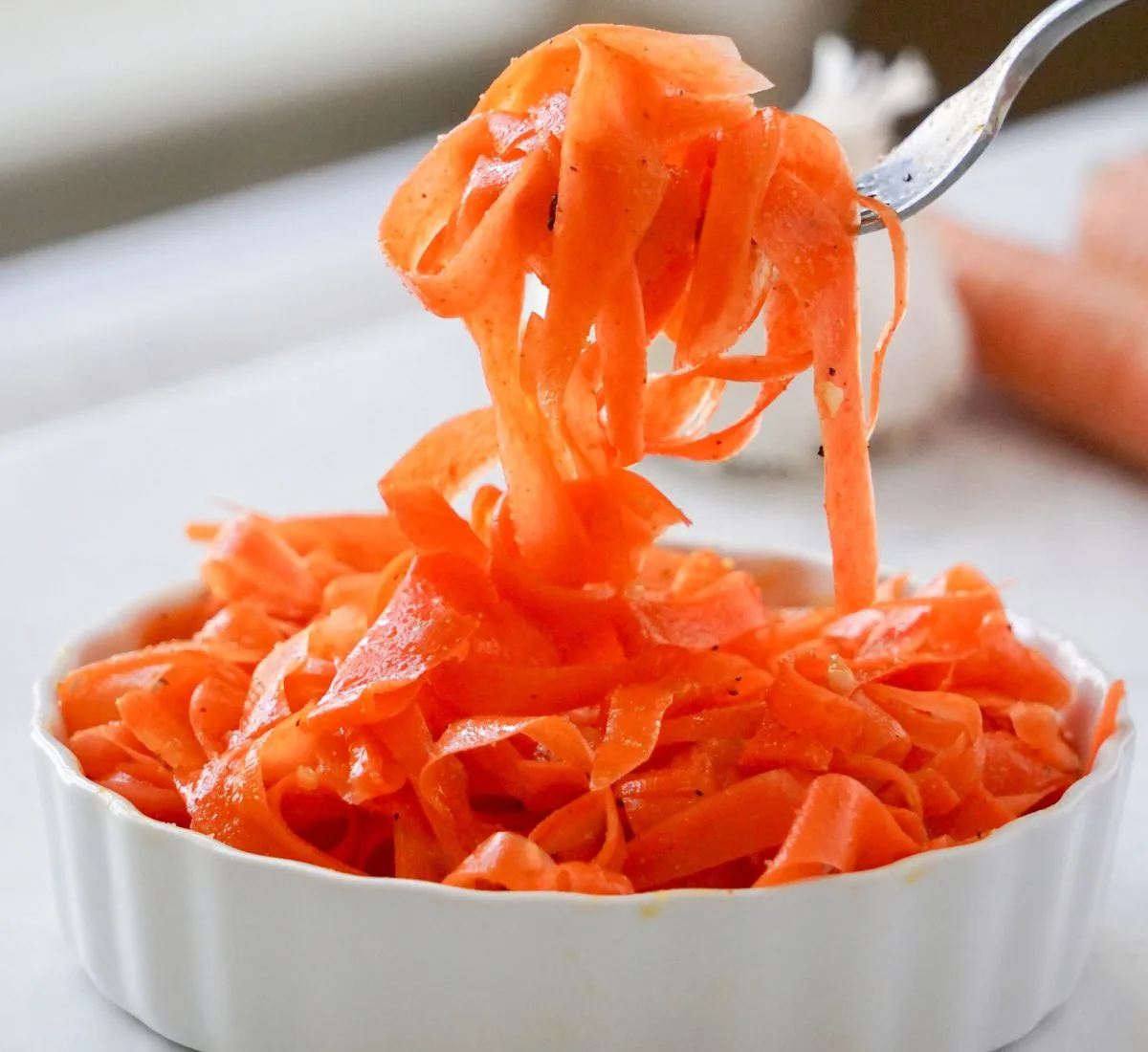
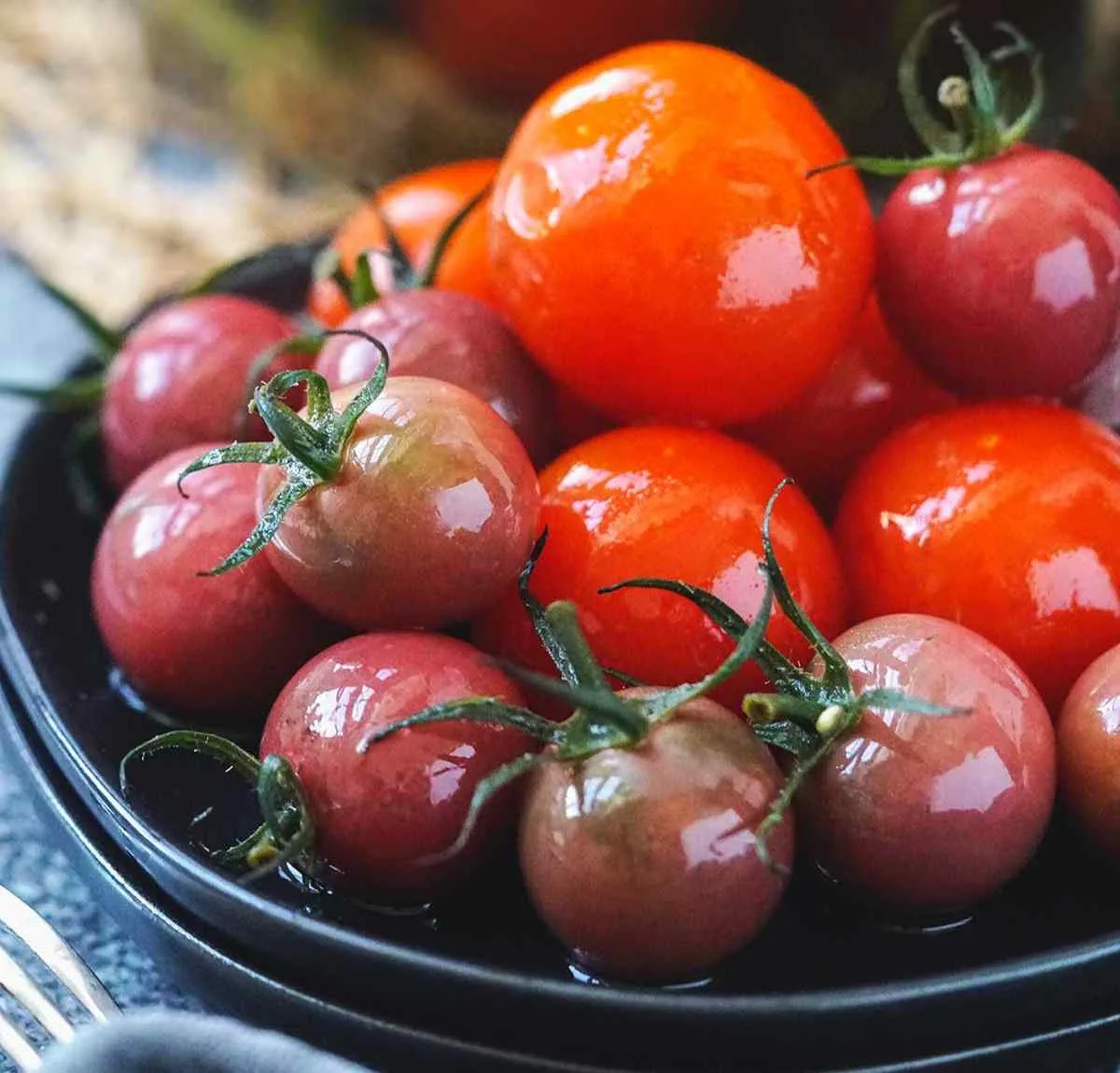
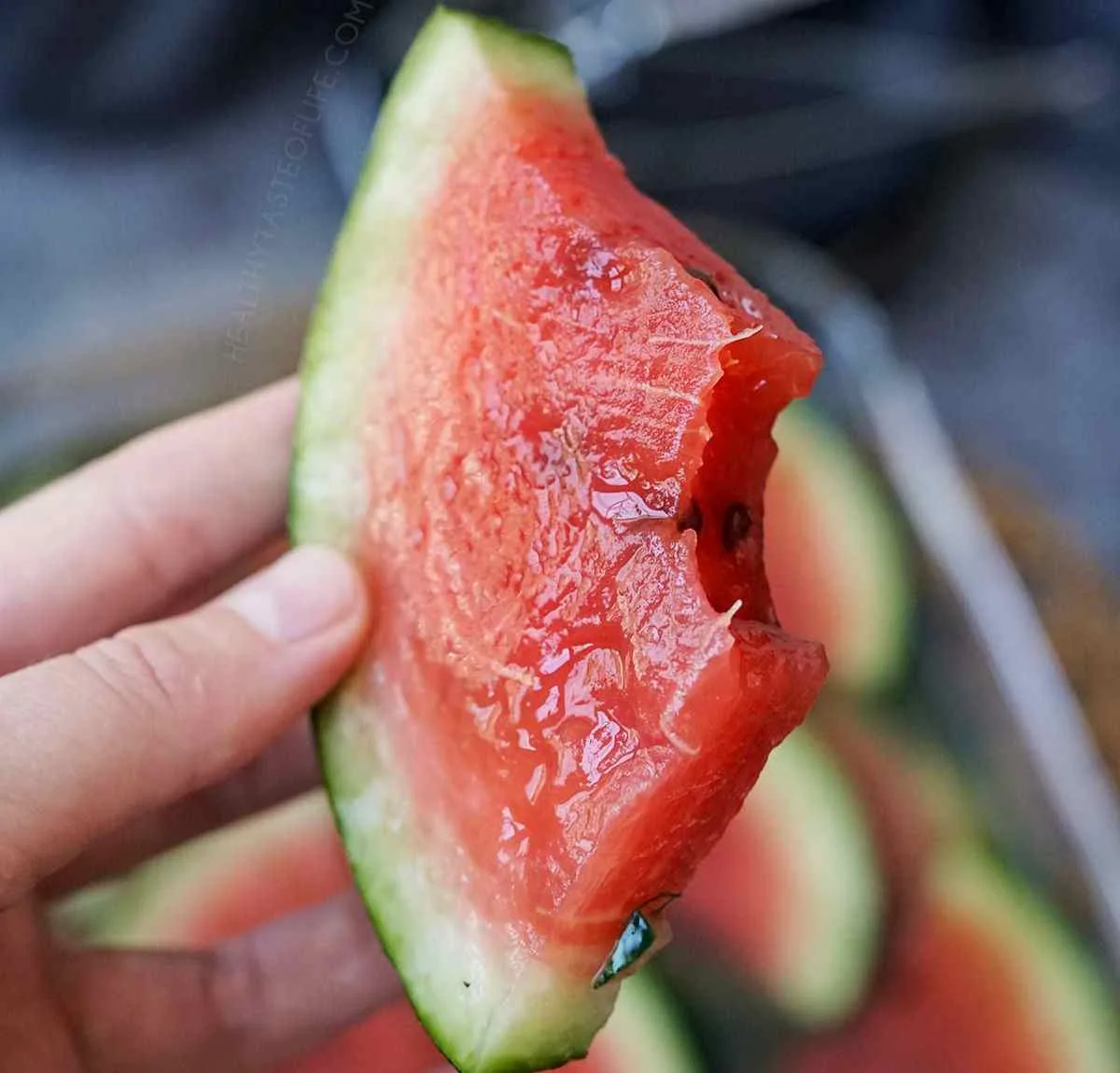


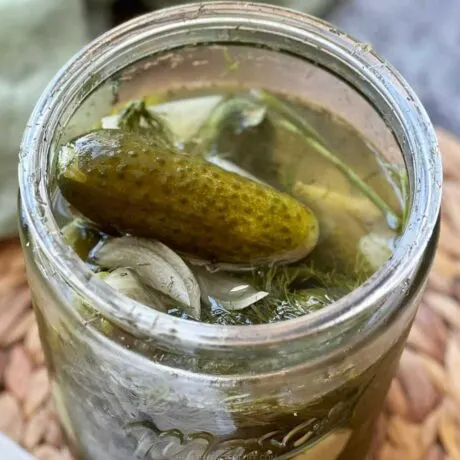
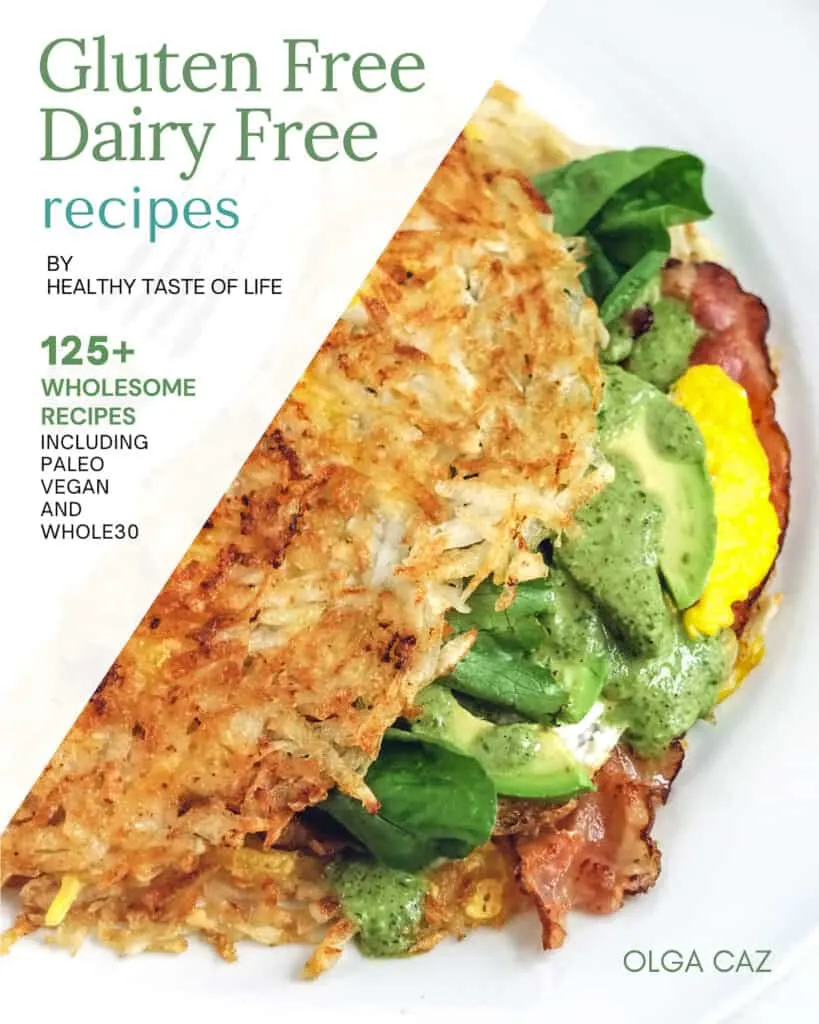
Binty
Sunday 25th of August 2024
Thank you, I was looking for a natural recipe like this!
MB
Monday 5th of August 2024
Hi - Question for you: do you intend for the lid to be locked and the jar to be ‘burped’ or should I use a weight or an air-lock lid for this recipe? The photos indicate leaving the jar covered, but not sealed, and the instructions indicate a sealed jar that is burped.
Thank you for the recipe and for your help, MB
HealthyTasteOfLife
Friday 23rd of August 2024
For this recipe, you should loosely cover the jar with a lid, not lock it completely. The jar needs to allow gases to escape during fermentation, so don't seal it tightly. Also use a weight to keep the cucumbers submerged and an air-lock lid if you prefer. The key is to let the gases escape while keeping the cucumbers submerged in the brine.
Nikki
Sunday 12th of November 2023
Didn't know you could make "pickles" withOUT vinegar, using brine instead. THANKS! for the info and Recipe for Healthier Fermented Cucumbers.